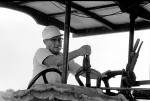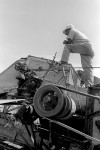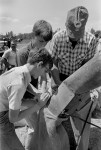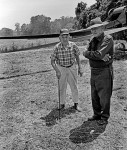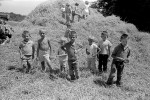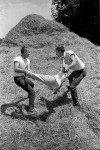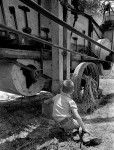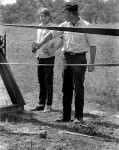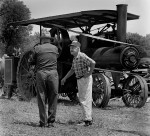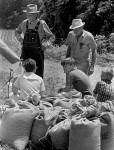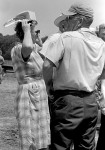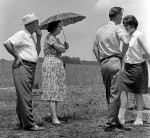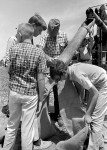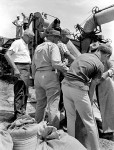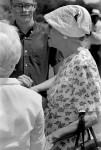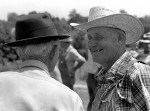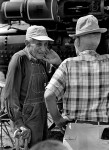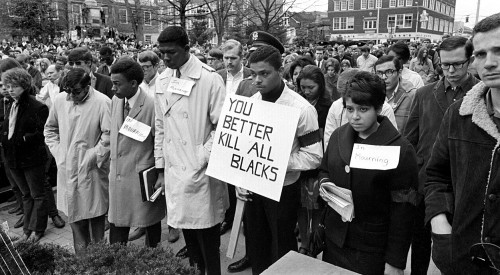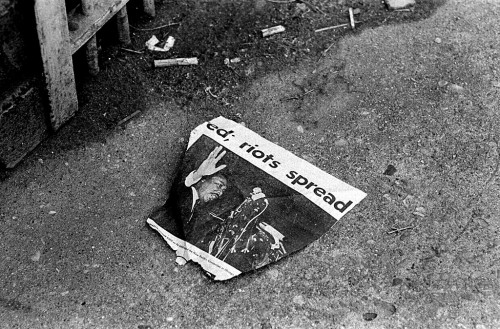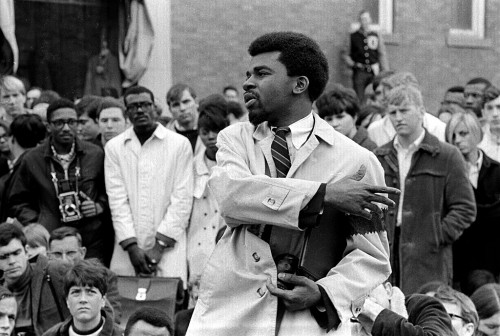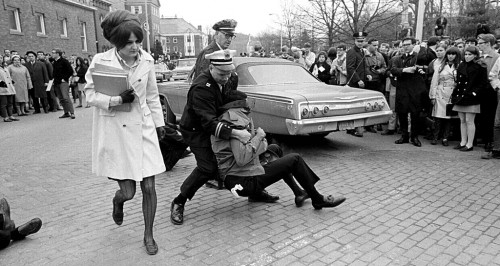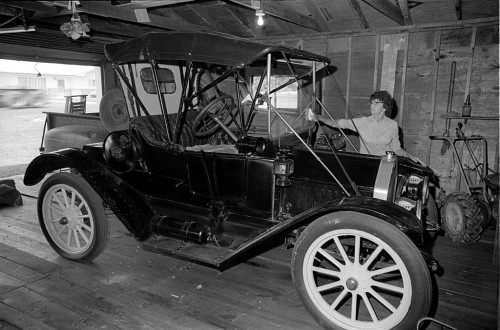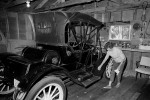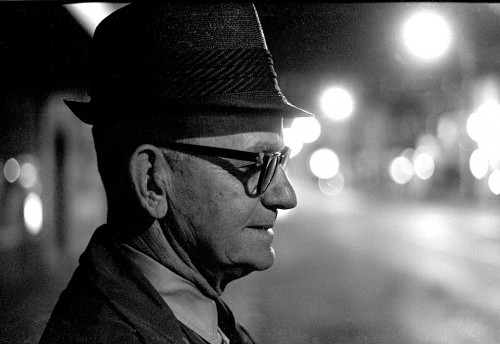 Jack Burris was the Broadway “door shaker” and one of the nicest guys I’ve ever met. After I shot a night assignment or sporting event, I’d have to go home to process and print the film. I’d rather stay up late than get up early, so I’d drive the photos back to The Missourian to keep from having to deliver them in the morning.
Jack Burris was the Broadway “door shaker” and one of the nicest guys I’ve ever met. After I shot a night assignment or sporting event, I’d have to go home to process and print the film. I’d rather stay up late than get up early, so I’d drive the photos back to The Missourian to keep from having to deliver them in the morning.
After that, I’d cruise the streets listening to police calls through my Tomkins Tunaverter, a little gray gizmo that lived between the car antenna and the AM radio. It converted the VHF FM police radio transmissions to AM broadcast frequencies so they’d play over the car radio. The only catch is that the Cape cops didn’t have but about three cars on the street at any one time, so there wasn’t a lot of radio traffic. You didn’t know whether the radio was quiet because the tubes had warmed up, causing the radio to drift off frequency, or if the Tunaverter had slipped off channel.
Jack carried a Motorola Brick
That’s where Jack would come in handy. He had been issued one of the first Motorola two-way radios that didn’t look like a lunch box. The HT-100, was better known as “The Brick” because it was about the same size and weight of one. I found one on the surplus market about 15 years later and had it converted to work on my newspaper’s frequency. I never picked it up without thinking of Jack.
Anyway, I’d pull up along the sidewalk and shoot the bull with him. After a decent interval, I’d say, “Jack, how about calling dispatch to give them a 10-4 check?” He’d do that, I’d fiddle with the radio dial and make sure I was back on frequency.
Jack was the first of many
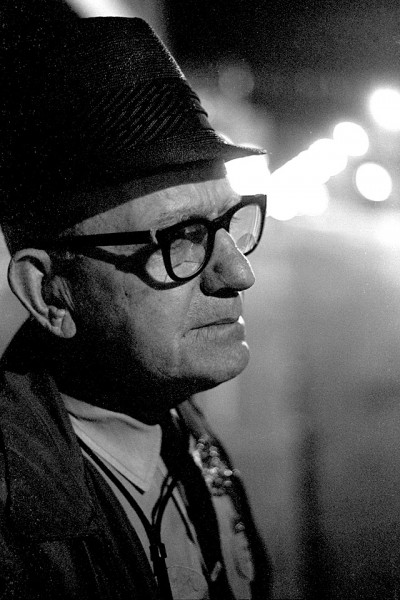 I don’t know that Jack fed me any stories that made it into print. We mostly just passed the time talking about stuff of no consequence. If he told me what he had done before becoming a merchant night watchman, I don’t recall what it was. The only story I could find in The Missourian was an account of how he reported the Idan-Ha fire to beat patrolman James A. Crites in 1968. He knew Girlfriend Lila, who was working as cashier at the Rialto. I sort of liked the idea that he was keeping an eye out for her.
I don’t know that Jack fed me any stories that made it into print. We mostly just passed the time talking about stuff of no consequence. If he told me what he had done before becoming a merchant night watchman, I don’t recall what it was. The only story I could find in The Missourian was an account of how he reported the Idan-Ha fire to beat patrolman James A. Crites in 1968. He knew Girlfriend Lila, who was working as cashier at the Rialto. I sort of liked the idea that he was keeping an eye out for her.
He taught me how to cultivate police and fire dispatchers working nightshifts. On slow nights, they welcomed a visitor who could speak their language and trade war stories. They’d pay me back by giving me a middle-of-the-night call if they thought something was going on that I’d be interested in. Even if I didn’t think it was worth running, I’d pull on my pants and head out to check on it, making sure I stopped by the station to thank them.
“Please expedite. We’re in excess of 105 mph”
I was passing the time with Andy, the Athens, Ohio, police dispatcher one night when a laconic voice came over the radio, “Athens 1 to Athens PD, run Ohio XYZ-123, please.” I told Andy that I could save him the trouble. “That’s my new car. I’m parked on the sidewalk in front of the station. John probably didn’t know that it’s mine.”
“Athens 1, Athens PD, please expedite. The driver just took off. We’re northbound on 50 in excess of 105 and he’s pulling away from me.”
If I had thought for a minute, I would have known that my Datsun couldn’t have hit 105 if it had been dropped off a cliff in a downdraft. Instead of processing that thought, though, I blasted out the front door where I spotted my new car and two cops in cruisers enjoying their joke.
Photo technical notes
I shot these photos under what you could call “available darkness,” because it sure didn’t pass for light. The film was so underexposed that I wouldn’t have even tried to make a print on photo paper. It’s amazing how much detail my Nikon Super Coolscan 8000 can find in something taken under miserable lighting conditions. The negative sleeve was dated May 23, 1967.
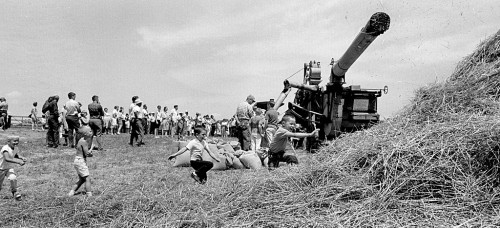 The caption that ran with a photograph similar to this one on the front page of the July 3, 1967, Missourian read, “Chaff spews from the muzzle of an ancient separator, adding to the pile of straw which small boys find irresistible. The scene was part of the seventh annual Cape County Steam Thresher and Old Settlers Reunion held on the Earl Kirchhoff farm north of Cape Girardeau Saturday and Sunday. Old farm machinery showed how things were done years ago. The event Sunday was attended by about 200 persons.”
The caption that ran with a photograph similar to this one on the front page of the July 3, 1967, Missourian read, “Chaff spews from the muzzle of an ancient separator, adding to the pile of straw which small boys find irresistible. The scene was part of the seventh annual Cape County Steam Thresher and Old Settlers Reunion held on the Earl Kirchhoff farm north of Cape Girardeau Saturday and Sunday. Old farm machinery showed how things were done years ago. The event Sunday was attended by about 200 persons.”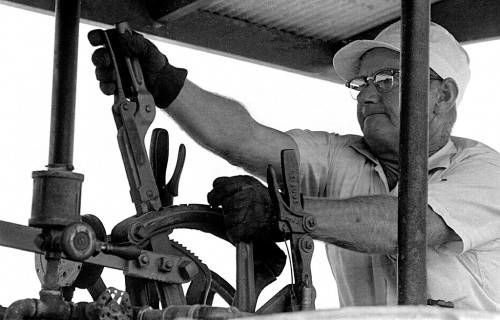 I didn’t realize how many other frames I had taken of the event until I kept pulling negative sleeves out of the drawer. I’m printing them because I assume there are some steam engine fans out there who will be interested.
I didn’t realize how many other frames I had taken of the event until I kept pulling negative sleeves out of the drawer. I’m printing them because I assume there are some steam engine fans out there who will be interested.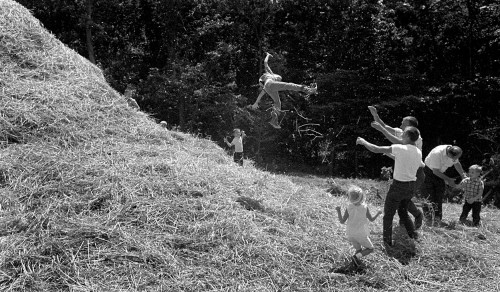 There are probably 83 reasons why you couldn’t do this today, but THESE kids had a blast and kept lining up to go again.
There are probably 83 reasons why you couldn’t do this today, but THESE kids had a blast and kept lining up to go again.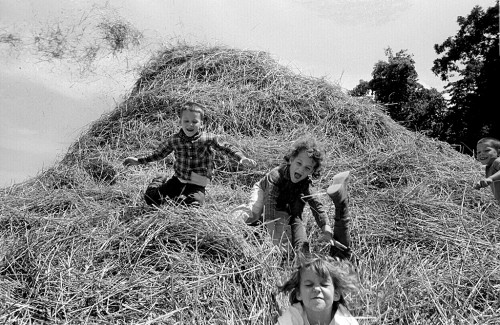 I never did get clear on whether or not these photos were taken at what it now called the Chuck Maevers Memorial Gardens on the west side of Hwy 127 at Egypt Mills. Were any of you among the 200 who showed up for the event?
I never did get clear on whether or not these photos were taken at what it now called the Chuck Maevers Memorial Gardens on the west side of Hwy 127 at Egypt Mills. Were any of you among the 200 who showed up for the event?
